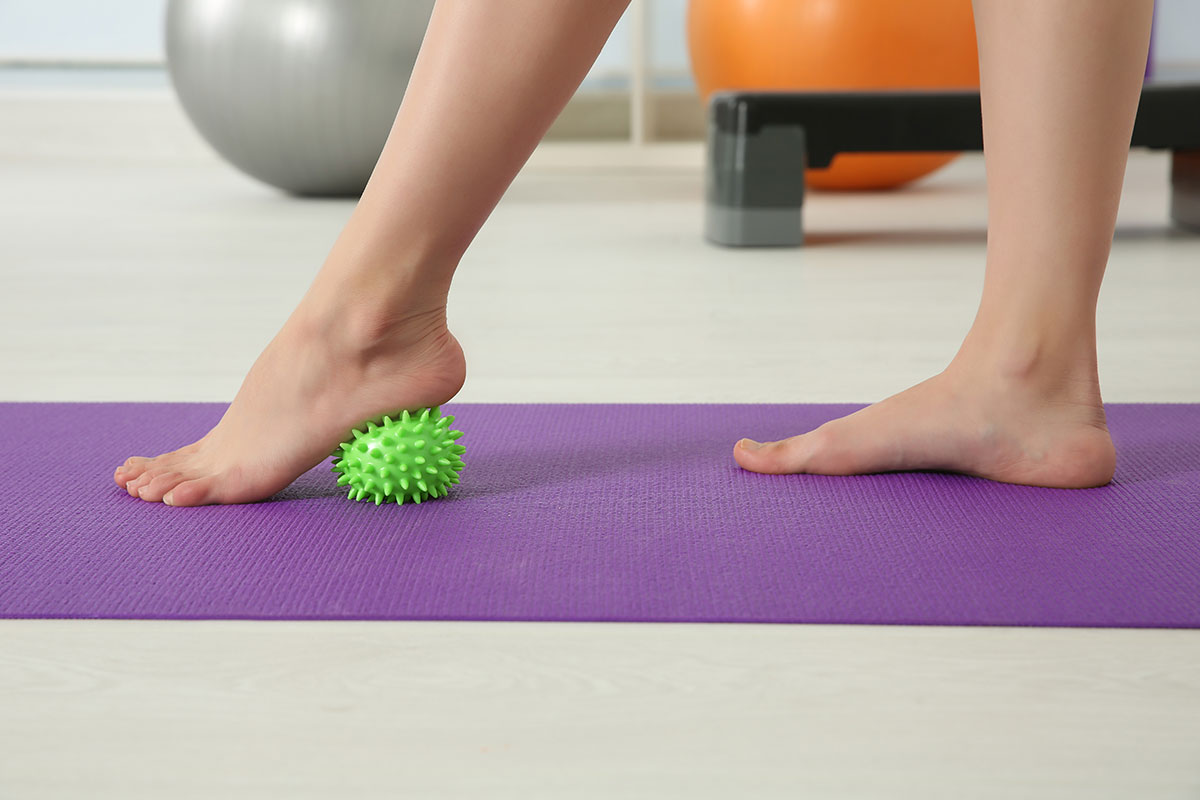Plantar Fasciitis: Causes, Symptoms, and Treatments
Plantar fasciitis is an irritation or tearing of the plantar fascia. This thick band of connective tissue travels across the bottom of the foot between the toes and the heel. It supports the foot's natural arch. It stretches and becomes taut whenever the foot bears weight.
If you suffer from plantar fasciitis, then you know how debilitating it can be. You may feel as though nothing you do ends up relieving the pain, and that you can’t bear to be on your feet longer than you have to be. Although this is completely understandable, it is important to know that there are treatment options out there that you can use to try and ease your discomfort.

What causes plantar fasciitis?
If you put additional stress on the fascia, whether it is through walking, or repeated stretching and strain, then this can lead to small tears. A lot of the time it is difficult to know what the main cause is. There are numerous risk factors that you can look out for. Plantar fasciitis is much more common in those who are aged between 40 and 60. Certain types of exercise that place a lot of pressure or strain on the heel can also contribute to the onset of this condition. Finally, foot mechanics can play a part too. Flat feet, or feet that have high arches can affect the way that you distribute your weight when walking or standing. This can contribute to the general development of plantar fasciitis.
Symptoms of Plantar Fasciitis
Some people who have this condition tend to experience pain at the base of the heel, or in the middle of the foot. Most of the time, you may find that one foot is affected, but it is not uncommon to feel pain in both. A lot of this comes down to the cause of your plantar fasciitis, whether it is through exercise, pressure, strain, obesity, or even age. The pain that stems from plantar fasciitis can develop over time, and it can be described as sharp or dull. You may experience a burning feeling accompanying the pain you feel, which can extend outward from your heel. Some of the signs that you may have plantar fasciitis include:
- Pain that is worse in the morning
- Difficulty climbing stairs due to stiffness
- Inflamed or irritated feet
With plantar fasciitis, the pain is usually worse first thing in the morning. You may find that the first few steps that you take out of bed in the morning are the worst. Also, you may experience pain after you have been sitting down for a long period of time. Some people find that they have difficulty climbing stairs, as the inflammation of the heel can make it difficult to perform the required motion.
One important thing to note is that people who struggle with plantar fasciitis do not usually feel pain during exercise or a strenuous activity. The pain tends to come right after stopping. The pain can last anywhere from a few minutes to a few hours. There are tests that doctors can do to make sure that there are no other problems that could be disguising themselves as plantar fasciitis.
Your doctor will usually perform an X-ray of your foot to find out if you have a bone spur or foot deformity that could be causing your pain.
Plantar Fasciitis Treatments
Generally, the longer you have been experiencing symptoms, or the more pain you are in, the longer it can take to see results from your treatment. Someone who runs cross-country or marathons may need much more intensive treatment when compared to someone who struggles with pain after lower impact exercise. Some of the treatment options for plantar fasciitis include:
- Stretching
- Medication
- Steroid injections
- Physical therapy
If you want to find out more about the treatment options available, then take a look below.
Stretching and Rehabilitation
Stretching is easily one of the best forms of treatment for plantar fasciitis. If you work with a physical therapist then they can show you some exercises that you may be able to do at home, multiple times a day.
Massaging
A physical therapist can massage your foot to try and ease pain and discomfort. You can even use a hard rubber ball to roll your foot and heel.
Strength Training
Strength training can be used to build muscle in the foot, providing greater support overall.
Medication
Anti-inflammatory medication and nonsteroidal medication may be recommended to ease inflammation while you carry out stretching exercises.
Therapeutic Ultrasound
Ultrasound waves can be used therapeutically to increase blood flow and decrease inflammation in the plantar fascia and surrounding tissue.
Steroid Injections
Although stretching can greatly improve plantar fasciitis, if your symptoms occur for two months or longer after stretching then steroid injections may be used to ease inflammation in the affected area.
Shoe Inserts
Sometimes custom shoe inserts can be used to add stability to the foot. This is most suited to those who have flat feet, or high heel arches.
Surgery
In severe cases, surgery called Plantar Fascia Release may be an option. This outpatient procedure is a surgical cutting of part of the plantar fascia, a thick band of connective tissue that supports the foot's arch. By partially cutting this tissue, the surgeon releases tension and allows the tendon to lengthen. This procedure is commonly performed to relieve pain caused by plantar fasciitis.
If you’re having pain caused by plantar fasciitis, please schedule an appointment with a specialist at The Centers for Advanced Orthopaedics.

